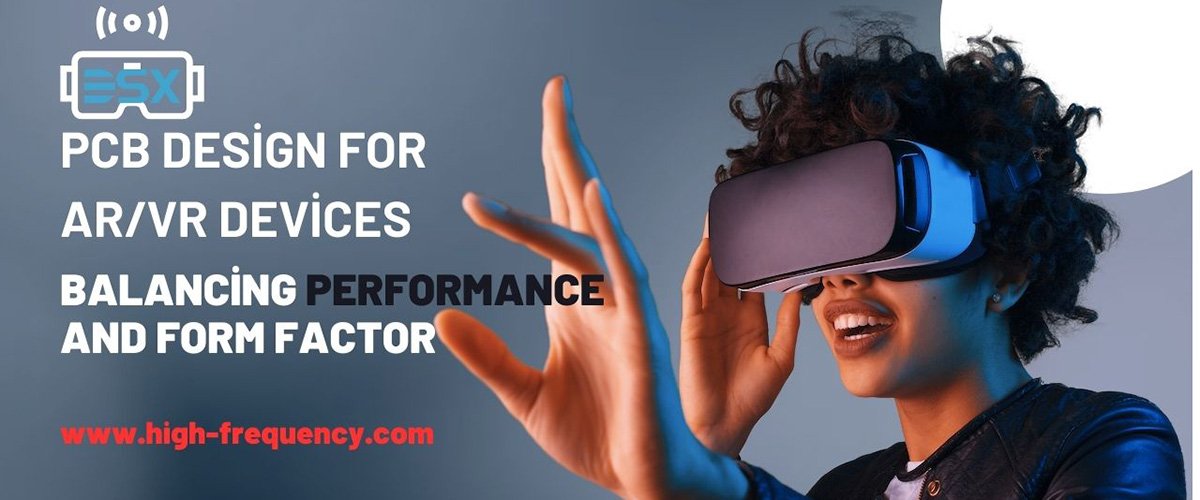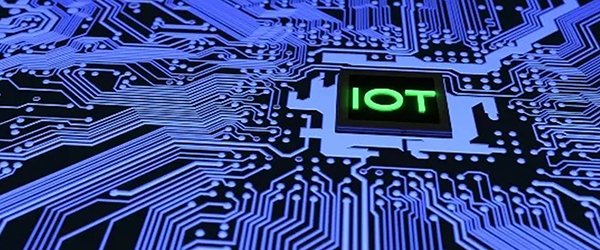PCB Design for ARVR Devices Balancing Performance and Form Factor

The burgeoning field of Augmented Reality (AR) and Virtual Reality (VR) is pushing the boundaries of technology, demanding ever-smaller, more powerful, and power-efficient devices. At the heart of these devices lies the Printed Circuit Board (PCB), a critical component that must simultaneously deliver high performance and conform to stringent form factor constraints. This article delves into the challenges and innovations in PCB design for AR/VR, drawing upon research and current industry trends.
Designing printed circuit boards (PCBs) for augmented reality (AR) and virtual reality (VR) devices presents a unique challenge: balancing high-performance requirements with the need for compact, lightweight form factors. As these devices become more integrated into daily life, engineers must employ innovative strategies to meet these demands.
Miniaturization and Space Optimization
The drive for miniaturization in AR/VR devices necessitates PCBs with exceptionally thin layers. Modern flexible PCBs can have layer thicknesses as thin as 25 micrometers (μm), enabling their integration into compact wearable electronics. This reduction in size is crucial for creating comfortable and unobtrusive devices.
Connectors also play a pivotal role in space optimization. Molex's quad-row board-to-board connector, for instance, utilizes a staggered-circuit layout that offers up to 30% space savings over traditional designs. With a signal contact pitch of 0.175 mm, these connectors are well-suited for the tight spaces within AR/VR devices.
AR/VR devices are characterized by their need for:
>>> High-Speed Data Processing: Real-time rendering of complex 3D environments requires high-bandwidth data transfer and processing, necessitating high-frequency signals and low signal integrity loss on the PCB.
>>> Low Latency: Minimal latency is crucial for immersive experiences and to prevent motion sickness. This translates to strict timing requirements for signal propagation on the PCB.
>>> Power Efficiency: Battery life is a significant concern for mobile AR/VR devices. Efficient power delivery and thermal management are paramount.
>>> Compact Form Factor: Headsets, glasses, and other wearable AR/VR devices must be lightweight and comfortable, demanding highly miniaturized PCBs.
Thermal Management
Effective thermal management is critical to maintain the reliability and longevity of PCBs in AR/VR devices. Excessive heat can degrade components, reduce efficiency, and lead to failures. To address these challenges, engineers can:
>>> Select High-Tg Materials: Using materials with a high glass transition temperature (Tg > 180°C) ensures stability under thermal loads.
>>> Manage Coefficient of Thermal Expansion (CTE): Incorporating materials with a low CTE (< 70 ppm/°C) minimizes expansion mismatches between layers and components, reducing mechanical stress.
>>> Increase Copper Thickness: Enhancing copper thickness (e.g., 3–5 oz per square foot) reduces trace resistance and improves heat conduction.
>>> Implement Thermal Vias: Placing multiple thermal vias near high-power components facilitates heat transfer from the surface layer to internal or external heat sinks.
>>> Ensure Adequate Airflow: Designing for sufficient airflow over heat sinks prevents hotspots and maintains optimal operating temperatures.
Key Design Considerations:
1. High-Density Interconnect (HDI) PCBs:
>>> HDI PCBs, with their microvias, blind/buried vias, and fine-line traces, are essential for achieving high component density and signal routing in limited space.
>>> Real-time data: Industry reports indicate a consistent increase in HDI adoption for wearables, with projected growth of approximately 7-9% annually in the next 5 years, due to the higher integration density that it allows.
2. Materials Selection:
>>> Materials with low dielectric loss and high thermal conductivity are crucial for minimizing signal loss and managing heat dissipation.
>>> For example, advanced materials like Rogers RO4350B and Megtron 6 are gaining traction due to their superior electrical and thermal properties.
>>> Research shows that the thermal conductivity of PCB substrate material can directly impact the operating temperature of high-power processing units by up to 15%.
3. Signal Integrity and EMI/EMC:
>>> High-speed signals are susceptible to signal integrity issues such as crosstalk, reflections, and impedance mismatch.
>>> Electromagnetic interference (EMI) and electromagnetic compatibility (EMC) are critical considerations due to the proximity of sensitive components and antennas.
>>> Real world testing has shown that proper grounding and shielding can reduce EMI emissions by up to 20dB in compact AR/VR designs.
4. Flex-Rigid PCBs:
>>> Flex-rigid PCBs, combining flexible and rigid layers, offer design flexibility and allow for complex 3D shapes, enabling integration into curved surfaces and tight spaces.
>>> The flex-rigid market has seen a consistent expansion, coinciding with the increase of wearable devices. This is due to the ability to fold the PCB into complex shapes.
5. Component Placement and Routing:
>>> Optimized component placement and routing are crucial for minimizing signal path lengths, reducing parasitic effects, and improving signal integrity.
>>> Simulation software is used to predict signal behavior and optimize routing before fabrication.
6. Power Delivery Network (PDN) Design:
>>> Stable and efficient power delivery is essential for reliable operation.
>>> Low-impedance PDN designs, utilizing decoupling capacitors and power planes, are employed to minimize voltage fluctuations.
>>> PDN impedance analysis indicates that proper capacitor selection and placement can reduce voltage ripple by up to 50mV in high-current AR/VR designs.
Emerging Trends:
Emerging trends in AR/VR PCB design are rapidly reshaping the landscape. Embedded components, seamlessly integrated within PCB layers, are shrinking device footprints while enhancing performance.
Simultaneously, advanced simulation tools are providing unprecedented accuracy in predicting high-frequency signal behavior, minimizing design iterations and optimizing signal integrity. The integration of AI-driven design methodologies promises to revolutionize PCB layout and routing, automating complex tasks and accelerating development cycles. Furthermore, the adoption of chiplet integration, where specialized integrated circuits are assembled on a PCB substrate, offers a modular approach to design, allowing for greater flexibility and efficiency in creating high-performance, compact AR/VR devices.
>>> Embedded Components: Embedding passive and active components within the PCB layers further reduces size and improves performance.
>>> Advanced Simulation Tools: High frequency signal simulation tools are becoming more advanced, allowing for very accurate prediction of signal integrity issues.
>>> AI-Driven PCB Design: Machine learning algorithms are being explored to optimize PCB layout and routing, improving efficiency and reducing design time.
>>> Chiplet Integration: The use of chiplets, smaller specialized integrated circuits, on a PCB substrate, allows for a more modular and efficient design.
Case Study: Meta's Orion AR Glasses
Meta's development of the Orion AR glasses underscores the complexities of balancing performance with form factor. Despite their advanced technology, including Micro LED projectors and a 70-degree field of view, the glasses faced challenges due to high manufacturing costs, approximately $10,000 per unit, and technical hurdles. These factors led Meta to focus on developing a more affordable and refined iteration for future release.
Conclusion
Designing PCBs for AR/VR devices requires a meticulous approach to balance high-performance demands with compact form factors. By embracing advanced materials, innovative connectors, and effective thermal management strategies, engineers can develop devices that are both powerful and user-friendly, paving the way for broader adoption of AR/VR technologies.
 PCB Design for ARVR Devices Ba
PCB Design for ARVR Devices Ba
 Internet of Things Industry PC
Internet of Things Industry PC

